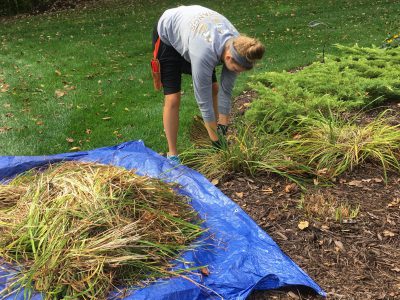The end of fall can be a bittersweet time for Minnesotans who have gardens. With a long winter ahead it’s hard to say goodbye to precious plant material until the following, highly anticipated, spring season. Did you know that winter can be equally forbidding for plants as well? Our last several winters have had below average snowfall, and above average temperatures. That weather combination can be devastating to plant material. The crowns of plants (the area where foliage meets roots) freeze and thaw with this odd weather pattern, and leads to killing the plants. To prevent damage to your plants over winter only cut back plants that suffered from disease or pests during the garden season.
Dispose of all debris in a location where it will not be reused as compost, many fungi and disease are soil born. For the healthy plant material, leave it up in the winter. The foliage left on the plant will act as an insulator for the crown below. For plants that are sensitive to freeze and thaw, such as fern and huchera, cover the plants with a layer of leaves or clean straw to prevent damage. It’s important to make sure your garden “goes to bed” with a good watering. Plants that are not starved for water have a greater chance of winter survival. This is often a step that gets overlooked when closing up garden areas and it might prove one of the most beneficial. You might notice that some people leave grasses and seed heads up for the fall- this is not only to provide a food source for birds as it is to have winter interest among a white canvas of snow.
Taking all of this into consideration, it’s really important to know your plant material and how it will react to winter temperatures. It’s great to have a fall garden consultation, or even hire professionals to help preserve the integrity of your gardens/landscaping by cleaning up for winter. No plant in Minnesota is guaranteed to survive through winter, but every preventative measure to ease its stress during winter can make all the difference.

